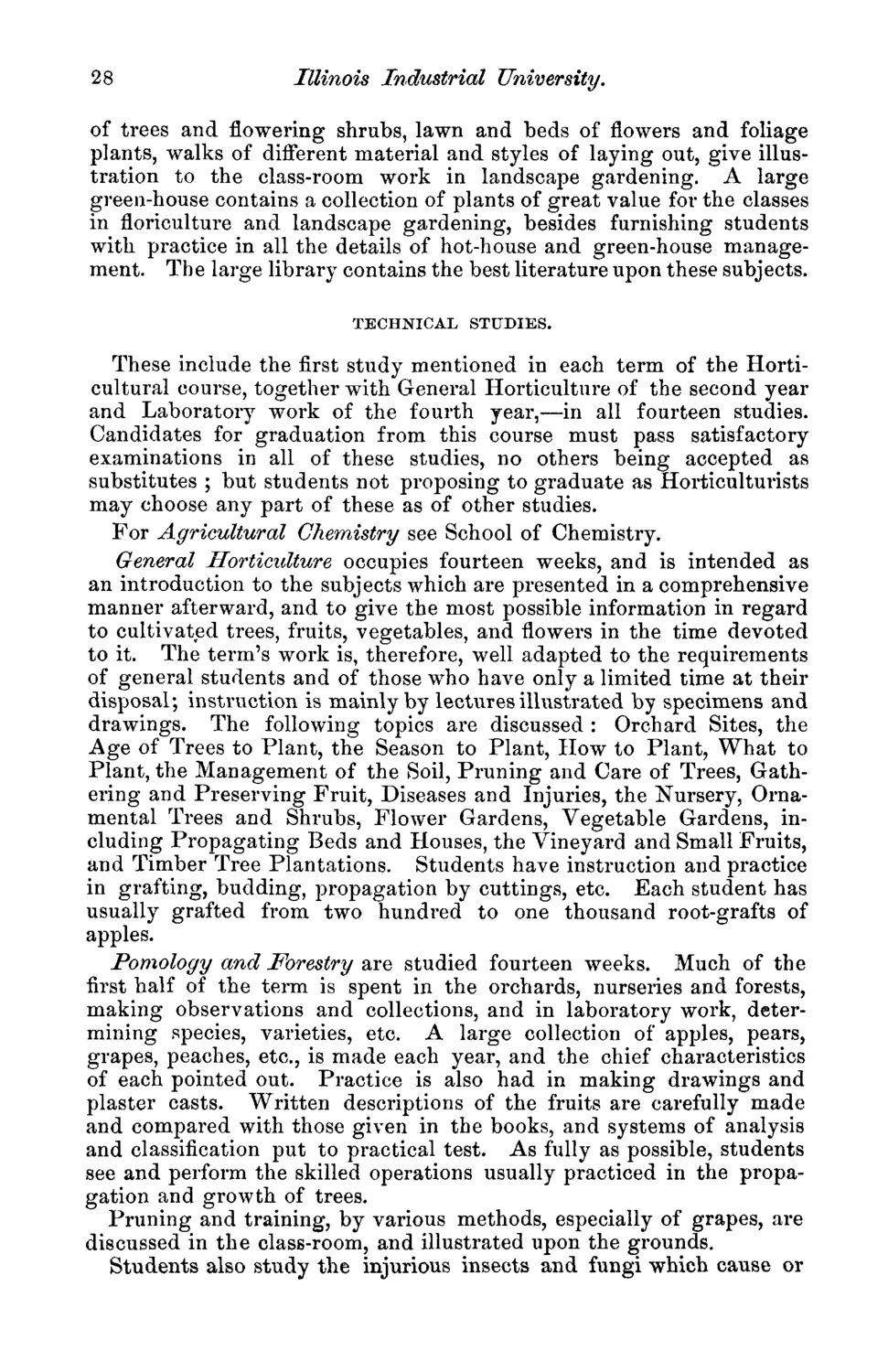| |
| |
Caption: Course Catalog - 1876-1877
This is a reduced-resolution page image for fast online browsing.

EXTRACTED TEXT FROM PAGE:
28 Illinois Industrial University. of trees and flowering shrubs, lawn and beds of flowers and foliage plants, walks of different material and styles of laying out, give illustration to the class-room work in landscape gardening. A large green-house contains a collection of plants of great value for the classes in floriculture and landscape gardening, besides furnishing students with practice in all the details of hot-house and green-house management. The large library contains the best literature upon these subjects. TECHNICAL STUDIES. These include the first study mentioned in each term of the Horticultural course, together with General Horticulture of the second year and Laboratory work of the fourth year,—in all fourteen studies. Candidates for graduation from this course must pass satisfactory examinations in all of these studies, no others being accepted as substitutes ; but students not proposing to graduate as Horticulturists may choose any part of these as of other studies. For Agricultural Chemistry see School of Chemistry. General Horticulture occupies fourteen weeks, and is intended as an introduction to the subjects which are presented in a comprehensive manner afterward, and to give the most possible information in regard to cultivated trees, fruits, vegetables, and flowers in the time devoted to it. The term's work is, therefore, well adapted to the requirements of general students and of those who have only a limited time at their disposal; instruction is mainly by lectures illustrated by specimens and drawings. The following topics are discussed : Orchard Sites, the Age of Trees to Plant, the Season to Plant, How to Plant, What to Plant, the Management of the Soil, Pruning and Care of Trees, Gathering and Preserving Fruit, Diseases and Injuries, the Nursery, Ornamental Trees and Shrubs, Flower Gardens, Vegetable Gardens, including Propagating Beds and Houses, the Vineyard and Small Fruits, and Timber Tree Plantations. Students have instruction and practice in grafting, budding, propagation by cuttings, etc. Each student has usually grafted from two hundred to one thousand root-grafts of apples. Pomology and Forestry are studied fourteen weeks. Much of the first half of the term is spent in the orchards, nurseries and forests, making observations and collections, and in laboratory work, determining species, varieties, etc. A large collection of apples, pears, grapes, peaches, etc., is made each year, and the chief characteristics of each pointed out. Practice is also had in making drawings and plaster casts. Written descriptions of the fruits are carefully made and compared with those given in the books, and systems of analysis and classification put to practical test. As fully as possible, students see and perform the skilled operations usually practiced in the propagation and growth of trees. Pruning and training, by various methods, especially of grapes, are discussed in the class-room, and illustrated upon the grounds. Students also study the injurious insects and fungi which cause or
| |